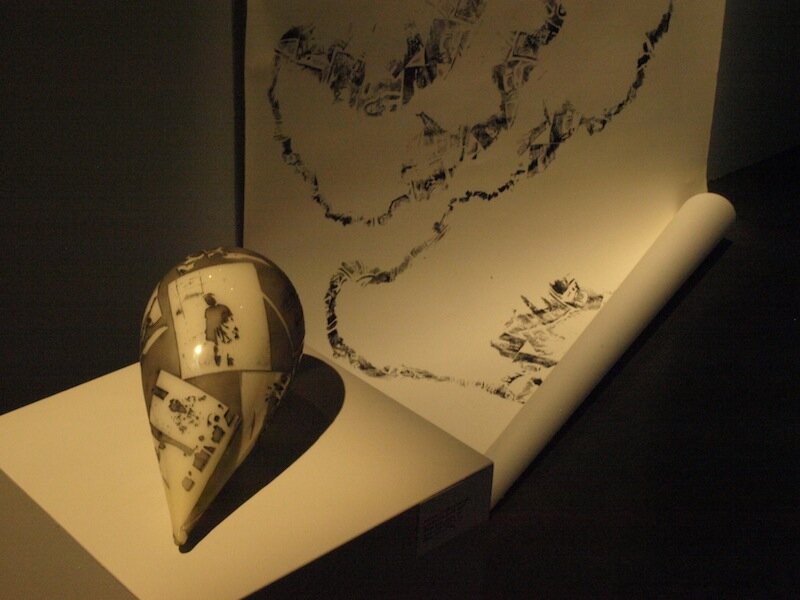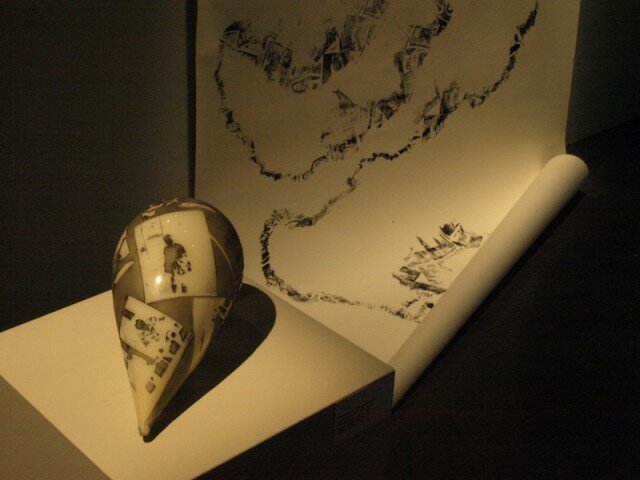STIFF, Seattle True Independent Film Festival, opens tonight and runs through next Saturday with a bunch great films, both short and feature length and as many zombie fuckfests as they can program. It’s the last year that STIFF is STIFF as we’ve come to know it as next year it rebrands as “Seattle Transmedia International Film Festival.”
I watched a handful of short films, where I only knew the title, to get a sample of what kinds of films one can expect at STIFF. You can find more info and get tickets on the festival’s website, of course.
Absent, dir: Malcolm Badewitz (4 minutes, Saturday, May 3 at 6pm, Grand Illusion Cinema)
Powerful, silent film that deals with the two families involved in a police shooting when a daughter wants to confront the police officer who shot her father. It’s a moving narrative that is made all the more poignant when there’s no sound, forcing you to react to it on your own terms.
Deadbook, dir: Richard Scobie (15 minutes, Thursday, May 8 at 10pm, LUCID Lounge)
Deadbook is a social network that lets people stay in touch with their loved ones for all of eternity. I’m not sure if it’s meant to be a parody of The Social Network, but it is a clever concept, and is still better than getting “poked” by your friends from the grave.
A Dose for Dominic, dir: Ruth Gregory, (7 minutes, Saturday, May 10 at 4pm, Grand Illusion Cinema)
Raising a five-year old child with severe autism and violent outbursts, two parents turn to medical cannabis as a means of treating their son’s condition. It’s an interesting movie that handles the subject deftly, and includes interviews with the doctors on how they developed a treatment that would work their son and how it worked out for them (spoiler: pretty good!).
Drive-Thru, dir: Georgina Higgins, (4 minutes, Wednesday, May 7 at 10pm, LUCID Lounge)
A claustrophobic comedy where two friends from a London suburb re-connect with a long-lost friend for a night in the Big City. It leads them to being chased when that friend turns out to be trouble. Their big night out takes a funny turn when they get hungry.
F’ing with Burlesque: PCP, dir. Tony James (20 minutes, Friday, May 9 at 8pm, Grand Illusion Cinema)
Popular local cult production features Gaydolf Hitler and his Mirror trapped in Gay Hell and they want to get out, so they decide to tempt Beelzebub with pot laced with PCP. It works out about as well as that sounds. The movie feels like it’s trying to recreate (or be an addition to) using hallucinogens. Loved the campiness, though.
I Am Not a Weird Person, dir: Molly McGlinn (5 minutes, Monday, May 5 at 7:30pm, LUCID Lounge)
A sort of twee short with a protagonist who needs to leave the house eventually because she’s out of toothpaste but doesn’t want to because she experienced a traumatic experience outside (someone told her to get out of his way, impolitely).
Meet My Rapist, dir: Jessie Beth Kahnweiler (7 minutes, Friday, May 9 at 8pm, Grand Illusion Cinema)
Dark, low budget comedy about Jessie who has a chance encounter at a farmer’s market with the man who raped her and shows how he’s shaped much of her life since then, and how it affects how people perceive her.
Sixnineteen: A Short Documentary, dir: Brian Nunes (27 minutes, Tuesday, May 6 at 6pm, Wing-It Productions)
This short doc would make an excellent companion to Razing the Bar, a documentary playing at SIFF about the demolished rock club the Funhouse. 619 Western Ave. was the home for artists for about thirty years before having to be tore down to make room for Seattle’s now-troubled tunnel project. It was inexpensive for artists to rent space there, and there hasn’t been anything to replace it. It was a dilapidated building to be sure, but it raises – and answers – some important questions that people anyone concerned with arts in Seattle need to grapple with.
Throwing Punches, dir: Rosalie Miller (13 minutes, Wednesday, may 7 at 8pm, LUCID Lounge)
A short documentary on martial arts instructor-turned-stuntwoman Leanne Hindle. It nicely summarizes the determination that propelled her career, and it’s a portrait of Hollywood (exported to Vancouver, where Hindle is from) that we only get to see on the rarest of occasions.


